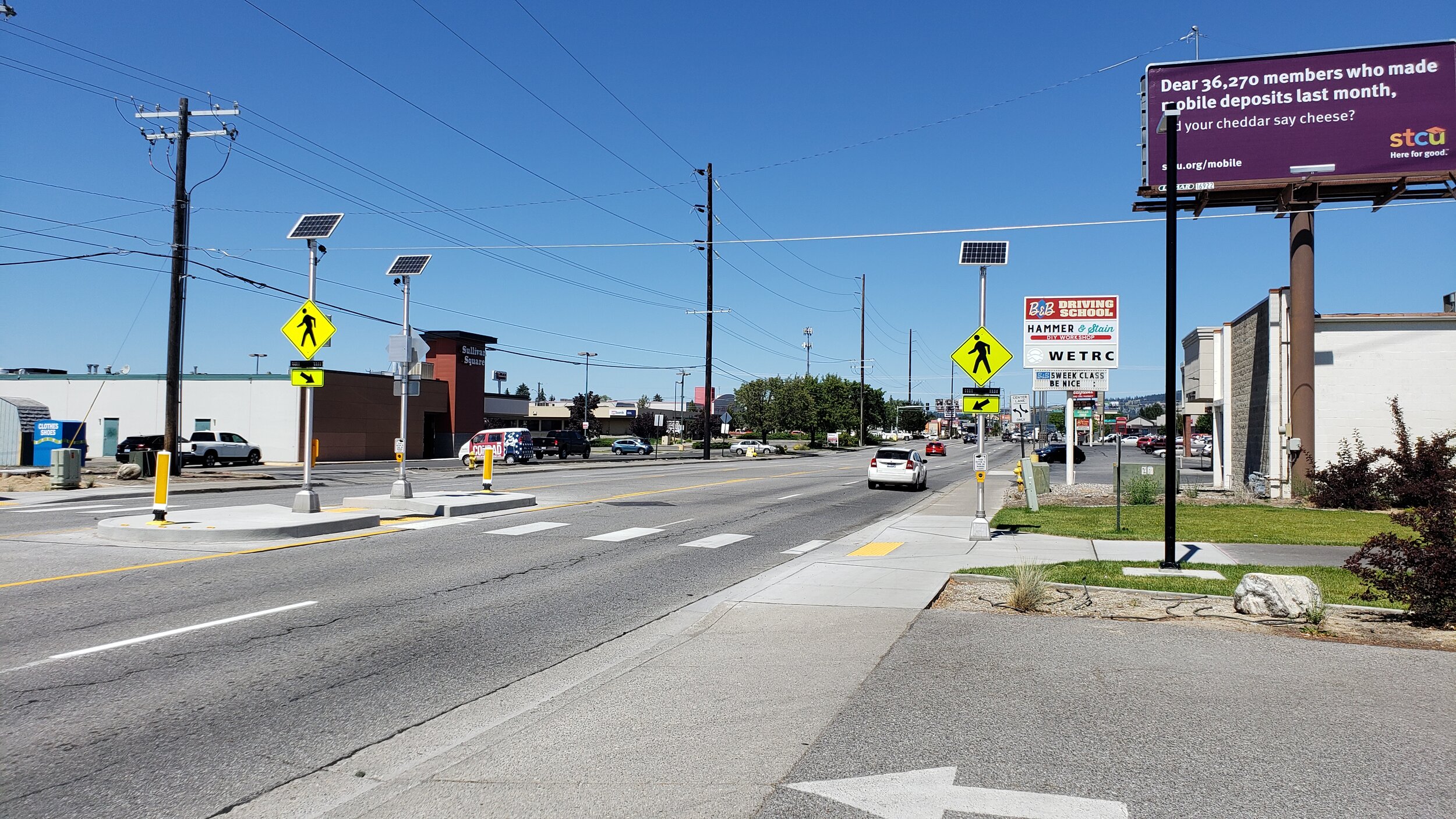According to data from the Federal Highway Administration, over 70% of pedestrian fatalities occur at non-intersection locations, including midblock crossings — marked crosswalks between intersections.
Midblock crossings on multi-lane, busy streets present safety concerns because drivers do not expect pedestrians at locations other than intersections, and on multi-lane roads, a vehicle stopped for a waiting pedestrian in the inside lane can impede the ability of drivers in the center or outside lanes to see a pedestrian in the crosswalk.
Several engineering measures have been found to reduce pedestrian collisions at midblock crosswalks, including:
- Stop lines set back 20 to 50 feet from the crosswalk to prevent a stopped vehicle in the inside lane from obstructing drivers approaching in the middle or outside lanes from seeing a pedestrian in the crosswalk.
- Pedestrian refuge islands to allow pedestrians to break up the crossing maneuver into two phases.
- Pedestrian-activated flashing lights, either overhead or mounted on crosswalk warning signs, to alert drivers to the presence of a pedestrian in the crosswalk, and HAWKs (High-Intensity Activated CrossWalK signals), which turn from yellow to red to stop traffic while pedestrians are in a crosswalk.


Traffic and pedestrian volumes, vehicle speeds, and the number of lanes are important factors in determining what engineering measures are needed to make a midblock crossing reasonably safe for pedestrians.
Pedestrian-activated flashing beacons and HAWK signals have been in use for more than 15 years, and were included in the 2009 Manual on Uniform Traffic Control Devices as measures for warning and controlling traffic at unsignalized marked crossings. A 2006 National Cooperative Highway Research Program report stated that the use of flashing beacons for pedestrian crossings is prevalent throughout the United States. Studies have shown that flashing beacons are more effective when they are pedestrian-activated (alerting drivers to the presence of a pedestrian in the crosswalk) rather than flashing all of the time, regardless of whether a pedestrian is present.
In 2018, the Washington State Department of Transportation (WSDOT) issued Enhancement Criteria for Uncontrolled Pedestrian Crossing Locations, which identifies engineering measures to use at unsignalized crosswalks for pedestrian safety, depending on the traffic volumes, speeds, and number of lanes. For midblock crosswalks, WSDOT states that pedestrian warning signs and stop lines are required.
Because pedestrians are extremely vulnerable to severe injury or death when hit by vehicles traveling at 25+ mph, midblock crosswalks require careful engineering analysis to determine what features are needed to make them safe for pedestrians to use. When proper engineering measures are not taken, serious injuries and deaths are foreseeable and expected at midblock crossings, as illustrated by a recent lawsuit filed against the City of Spokane on behalf of a young man who suffered a serious brain injury as a result of being hit by a vehicle in a midblock crossing that lacked a stop/yield line and pedestrian-activated flashing lights or a HAWK signal.

The attorneys at Stritmatter Kessler Koehler Moore have handled many cases involving injuries and deaths caused by unsafe crosswalks. If you or a loved one has been injured or died as a result of being struck by a vehicle in an unsafe crosswalk, please contact us for a free consultation.